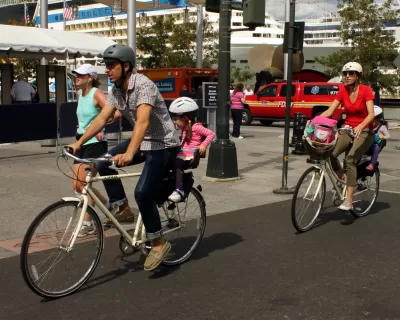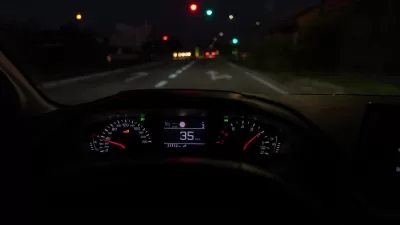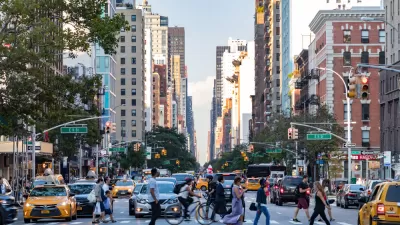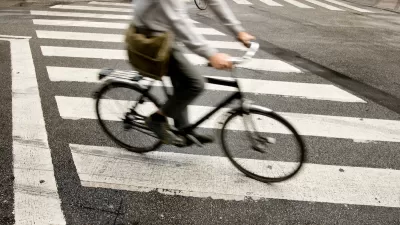New York City will create green waves by adjusting traffic signals to keep cyclists moving, even when drivers will have to slow down.

Winnie Hu reports on plans in New York City to retime traffic signals to give cyclists priority. The strategy will recalibrate signals for cyclists, who travel about 10 to 15 miles per hour, by giving them a series of green lights and stopping drivers traveling above 15 miles per hour.
"New York’s experiment with what has been called a green wave is part of a global movement to make urban streets more welcoming to bikes, even as the country’s streets have become more dangerous," writes Hu. With a green wave system in place, traffic also runs more smoothly and the potential for crashes decreases as cyclists and motorists stop speeding up to try to beat red lights.
Copenhagen was the first city to adapt the concept of the green wave for biking. In the United States, traffic signals have been adjusted on streets in San Francisco, Chicago, and Portland, Oregon. New York City had implemented a green wave on a small segment of a Brooklyn roadway and plans to expand it to other streets in Brooklyn, Manhattan, and Queens.
FULL STORY: After Cyclist Deaths, City Adjusts Traffic Lights to Slow Cars

Planetizen Federal Action Tracker
A weekly monitor of how Trump’s orders and actions are impacting planners and planning in America.

Maui's Vacation Rental Debate Turns Ugly
Verbal attacks, misinformation campaigns and fistfights plague a high-stakes debate to convert thousands of vacation rentals into long-term housing.

Restaurant Patios Were a Pandemic Win — Why Were They so Hard to Keep?
Social distancing requirements and changes in travel patterns prompted cities to pilot new uses for street and sidewalk space. Then it got complicated.

In California Battle of Housing vs. Environment, Housing Just Won
A new state law significantly limits the power of CEQA, an environmental review law that served as a powerful tool for blocking new development.

Boulder Eliminates Parking Minimums Citywide
Officials estimate the cost of building a single underground parking space at up to $100,000.

Orange County, Florida Adopts Largest US “Sprawl Repair” Code
The ‘Orange Code’ seeks to rectify decades of sprawl-inducing, car-oriented development.
Urban Design for Planners 1: Software Tools
This six-course series explores essential urban design concepts using open source software and equips planners with the tools they need to participate fully in the urban design process.
Planning for Universal Design
Learn the tools for implementing Universal Design in planning regulations.
Heyer Gruel & Associates PA
JM Goldson LLC
Custer County Colorado
City of Camden Redevelopment Agency
City of Astoria
Transportation Research & Education Center (TREC) at Portland State University
Jefferson Parish Government
Camden Redevelopment Agency
City of Claremont





























